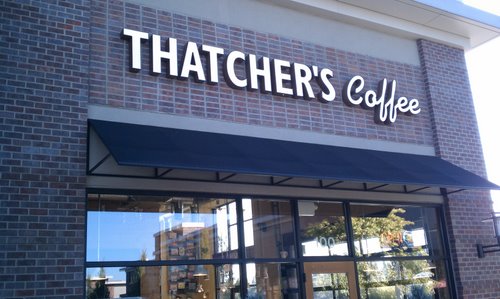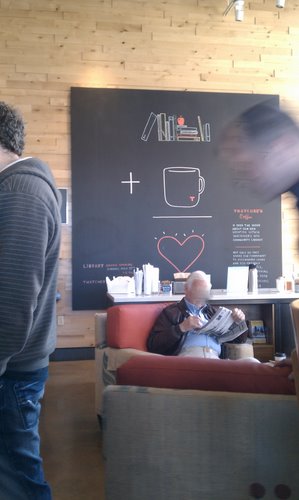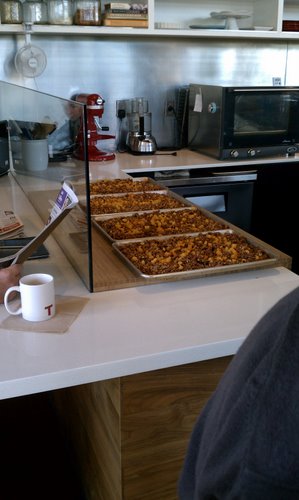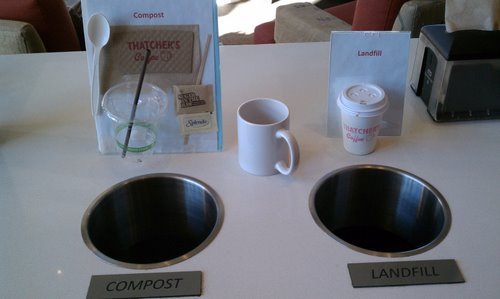Let's Go to Brazil! - The Story of Nossa Familia Coffee
 Sunday, October 23, 2011 at 12:11PM
Sunday, October 23, 2011 at 12:11PM [Note: This is Part 1 of the story. Part 2 will be published tomorrow.]
After a brisk morning bike ride, with semi-frozen hands I knocked on the door to Nossa Familia’s coffee headquarters in Inner Southeast Portland, with the intent of learning about Portland’s very own Brazilian coffee company. I also wanted to find out more about the free trip for two to Brazil that Nossa Familia is giving away (click the link to go directly to the sweepstakes). For coffee/culture/language/adventure/travel lovers like myself (and for anyone else who has an adventurer’s pulse), this was definitely a story that I wanted to check out and share with you.

I was able to sit down with Augusto Carvalho Dias Carneiro, the owner and founding family member, and Sarah Bailen Smith, the company’s marketing manager (the “coffeevangelist”) to get both stories.
Generations of Coffee Excellence
Nossa Familia, which means “our family” in Portuguese, relays the importance of family in the company’s story. For more than one hundred years, the Carvalho Dias family has been raising coffee on its farms in Brazil, and through Nossa Familia, some of this coffee is now making its way to Portland and beyond. Thus, there are two intertwining narratives that form the Nossa Familia story. The first is the history of the family’s connection to coffee, and the second is the story of Nossa Familia itself.
In 1890, Augusto’s great-grandfather and three older brothers moved to the Sul de Minas region in search of the sulfurous healing waters that flowed from springs along an ancient volcano. The family settled close to the city of Poços de Caldas, about 160 miles north of the capital, São Paulo, in the southern third of the country. Soon after, Augusto’s great-grandfather planted the family’s first coffee trees in what turned to be a very good location. The rich volcanic soils and the high altitude provided just the right environment for growing coffee, and the farm became successful.
“We were very lucky they settled there,” said Augusto.
Over the years, the farm first grew larger and then was divided up and passed down through the generations. Today, there are three different farms that the Carvalho Dias family operates: Fazenda Santa Alina, Fazenda Recreio, and Fazenda Cachoeira. Various cousins operate the farms and associated coffee businesses.
The Carvalho Dias family has always been concerned with coffee quality, even though Brazilian coffee has not always had the best reputation. This was partly due to government regulations. In the past, all Brazilian coffee was lumped together before being sold on world markets as a commodity. This resulted in a lot of average coffee coming out of the country.
When the government loosened the export restrictions in the 1990s, it created an opportunity for farmers to showcase their individual coffees. Augusto’s cousin Gabriel took advantage of the new freedom and began submitting his coffee to competitions and building connections with world-class baristas. The world noticed that Brazilian coffee could be very good, and Fazenda Cachoeira coffee has been a part of some of the world’s best competition blends. In 2004, coffee from Fazenda Recreio won the Cup of Excellence.
In it for the Long Term
Sustainability is an important concept the specialty coffee industry, and the Carvalho Dias family strives to implement sustainable practices into their farming efforts.
“My family has always done things with the idea that we want to keep the farms running for more than 100 years,” Augusto explained.
That sustainability includes social, economic and environmental aspects. Fazenda Cachoeira is certified by Utz Kapeh, demonstrating it meets strict social and environmental criteria. For most of the year, the farm produces its electricity from a turbine the family installed in the 1950s in the waterfalls. Permanent housing on the farm is provided for the families who work there.
“When you do something for this long, by nature you have to be sustainable,” he added.
Coffee Harvest and Processing
As in many coffee-growing countries, the urbanization of Brazil is changing how coffee is produced. Over the past year, several people have told me that the best way to harvest coffee is to have workers pick the same trees multiple times by hand as the cherries ripen. This ensures that only the ripest cherries make it into the final coffee.
However, in the Carvalho Dias family’s case, the main method of coffee harvest on the fazendas is strip picking. With strip picking, the farmers wait until nearly all of the cherries are ripe on the branches, then strip the branches clean and collect the cherries. It is a much faster way to harvest the coffee, but because it can result in green cherries getting into the coffee, strip-picking does not have the best reputation in the specialty coffee industry.
Augusto explained why: “If you mixed it all, you would lose quality because some of the cherries are not ripe.”
To avoid lowering the coffee’s quality, the family has invested in sorting machines that separate the ripe and non-ripe cherries.
The trend toward faster picking methods and post-harvest separation is likely to continue. As more and more Brazilians move to the cities in search of employment opportunities, there are fewer people to work in the fields and on the farms. In some cases, the migration to the cities is creating labor shortages.
The extent of this change became clear to Augusto on the first tour of the farms he led. In November 2008, the group was riding their bikes through the countryside when they passed by a neighboring farm. By that point of the year, all of the coffee should have been harvested, but surprisingly, they saw many coffee cherries still hanging on the trees, left to rot. Augusto’s cousin told him that the farmer could not afford to bring in out-of-state workers to harvest the coffee, so the coffee stayed on the trees.
This episode changed Augusto’s perception that it was only acceptable to selectively harvest ripe cherries by hand.
“A lot of people, me included, thought that coffee should only be picked by hand. But what’s worse, to use strip-picking or machines, or to let the coffee rot? I think the reality is that in the future, there will be more farms trying to use machinery to harvest the coffee. Otherwise, some coffee will not be harvested.”
Pulp Natural Processing
Two processing methods are used at the farm: natural processed and pulp natural. We talked primarily about the pulp natural method. Augusto pulled out a notebook to share some pictures of how it works.
After the coffee is picked, all of it goes into sorting machines, where unripe cherries, leaves and twigs are separated out. Once separated, the ripe cherries are pressed through a large screen-like mesh that peels off their skin. The resulting mixture of fruit mucilage and seeds are then spread out on large cement pads out in the sun to dry. Once on the pads, the coffee is frequently turned by hand so that it dries evenly.
The coffee goes from the tree to the drying process in about four hours. It is necessary to do this quickly because the sugars in the cherries start to ferment, and too much fermentation can lead to unpleasant tastes ending up in the coffee.
Relying on the sun to dry the coffee is environmentally friendly, but it also introduces the risk of weather-related catastrophes. Sarah pointed out a picture from the notebook of a batch of coffee that had been lost to a sudden rainstorm. You could see how the coffee had been washed away. Such events are part of life on the farm, though with ever-improving weather forecasting technology, they occur less frequently.
After the coffee is dried on the pads for three days, it is sent through a dryer to make sure that the moisture content is even throughout the lot. The dried beans are then polished so that nothing but the seed remains, and the beans are put into large burlap sacks to “rest” for 60-90 days before being roasted or exported.
That’s the story of the family’s coffee. Tomorrow, I’ll tell you about how the link between Portland and Brazil was created, in the form of a new Portland coffee company.







